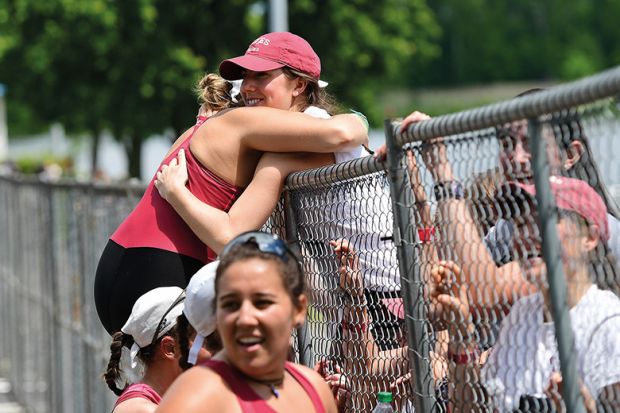The US higher education sector is the most diverse in the world. From private plutocracies to the iconic but crumbling state systems, workhorse community colleges to the fabled liberal arts colleges, it is a patchwork quilt in the best American tradition.
It is quite a task, then, to draw up a ranking that brings order and comparability to this ensemble cast. As Phil Baty, our rankings director, explains in our opinion pages, our guiding principle in the exercise – which we publish in partnership with The Wall Street Journal – is to provide a ranking that better informs student choices.
Unlike the heavily research-focused world rankings, our US ranking focuses on the questions that matter most to undergraduates: the resources that colleges have to teach them; the levels of engagement and academic challenge that they can expect; and the inclusivity that they will find when they arrive.
In the cover story accompanying the tables, we focus in on liberal arts colleges, defined by their unique brand of undergraduate education, with a core curriculum covering a broad range of disciplines, typically delivered in small, well-resourced classrooms.
While the data support long-standing concerns about the elitist nature of many of these colleges, the best among them remain stellar performers in areas such as student engagement.
Yet for a long time, discussion about the liberal arts model has placed it somewhere on the spectrum between decline and irrelevance.
As long ago as 1990, in a paper titled “Are we losing our liberal arts colleges?”, it was suggested that “the liberal arts college as we know it is disappearing, and another type of institution, the professional college, is taking its place”.
In 2012 another paper reassessed the question, concluding that while few of the colleges had actually disappeared in the intervening years, many had changed dramatically, and in a way that cast doubt on their continued classification as liberal arts institutions.
Vicki L. Baker, one of the authors of the 2012 study, tells Times Higher Education this week that the colleges in question still offer a unique educational approach, despite having evolved to offer graduate programmes, professional education or assuming other attributes that move away from the traditional model.
Others, though, are more pessimistic, arguing that students no longer value the liberal arts “brand”, that a relentless focus on value-for-money poses a critical challenge, and that colleges themselves have been too slow or unwilling to define what their “value proposition” really is.
The sharp-eyed will notice that the word that keeps cropping up is “value”.
It’s a debate that extends beyond institutional and instructional models to academic disciplines, most notably the arts, humanities and – to a lesser extent – social sciences. All are fundamental to a liberal arts education, and all are targets for political point-scoring and (student) consumer anxiety. As is noted in our cover story, Sam Clovis, Donald Trump’s campaign policy director, proposed making it harder to secure a loan to major in the liberal arts: “If you’re going to study 16th-century French art, more power to you…but you are not going to get a job,” he said.
In our opinion pages, Andrew Moore, of St. Thomas University, New Brunswick, outlines some of the defences: that expertise in these allegedly esoteric fields is, in fact, highly valued in the world’s most innovative industries (Jonathan Ive, chief design officer at Apple, holds a bachelor of arts degree); that the liberal arts are our best line of defence against growing threats to democracy; and that it’s only by confronting and interrogating the big questions in life that life becomes worth living.
This last point, Moore acknowledges, is not an easy sell. It sounds vague or preachy. But, he argues, if we’re facing a crisis about what it means to be human, with the advent of artificial intelligence threatening livelihoods and neoliberal blinkers narrowing our outlook, it’s the humanities that offer salvation. Without them, what are we?
POSTSCRIPT:
Print headline: A measure of humanity
Register to continue
Why register?
- Registration is free and only takes a moment
- Once registered, you can read 3 articles a month
- Sign up for our newsletter
Subscribe
Or subscribe for unlimited access to:
- Unlimited access to news, views, insights & reviews
- Digital editions
- Digital access to THE’s university and college rankings analysis
Already registered or a current subscriber?
